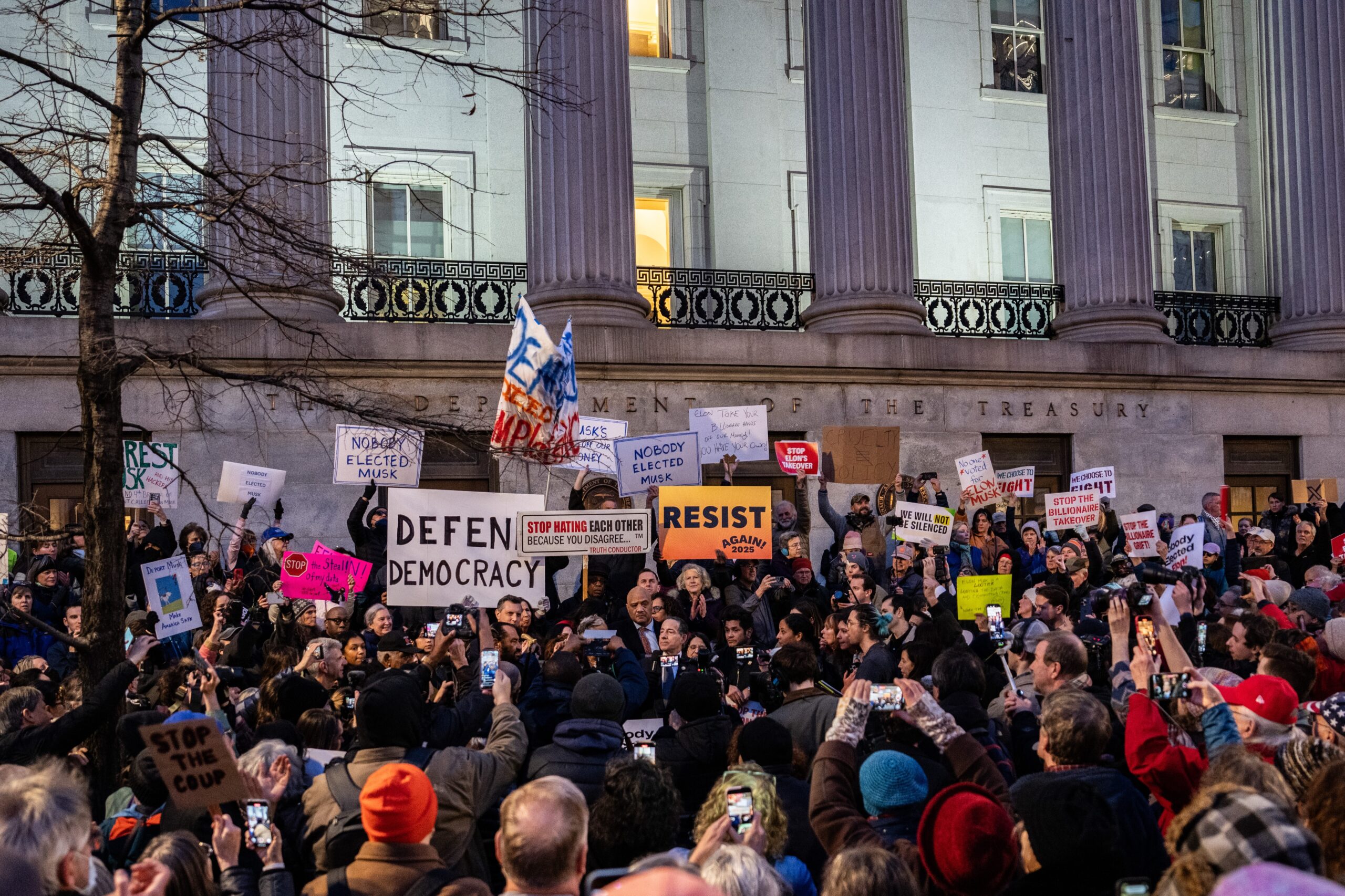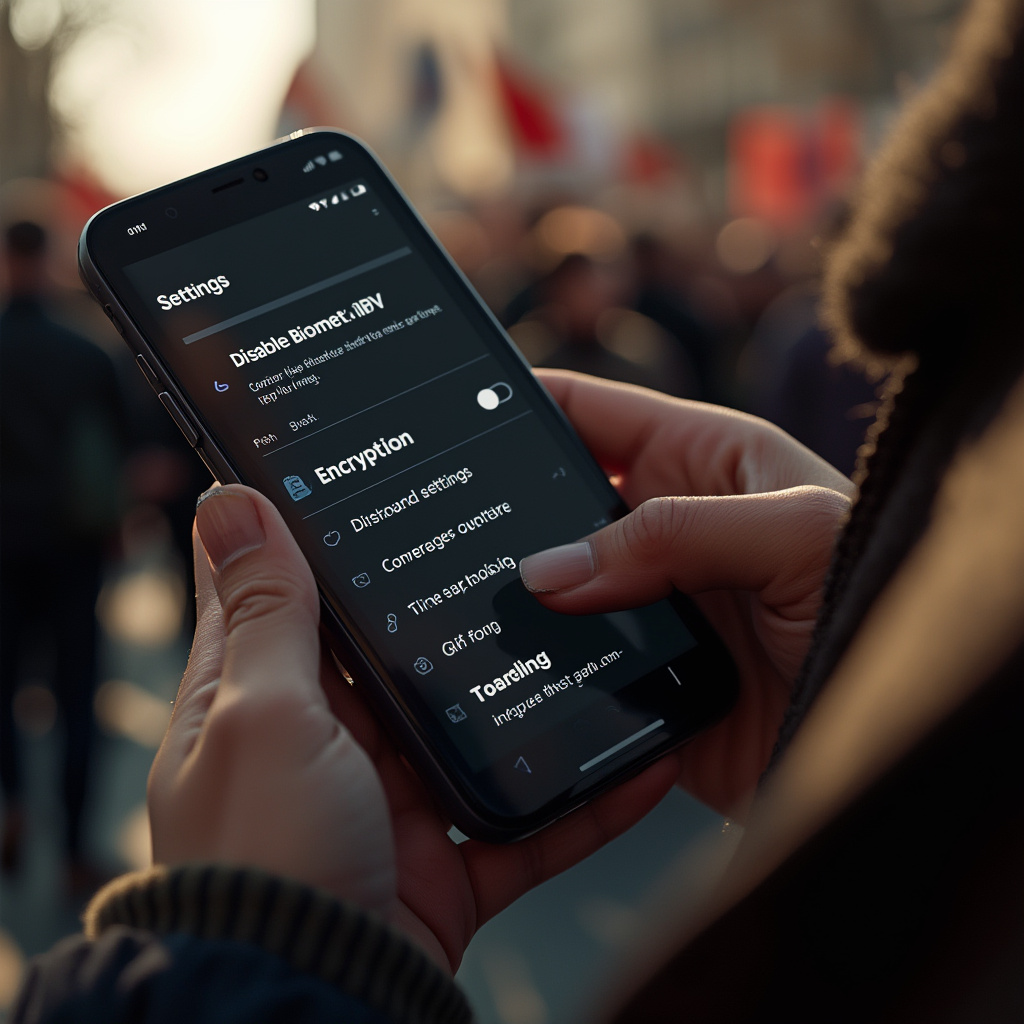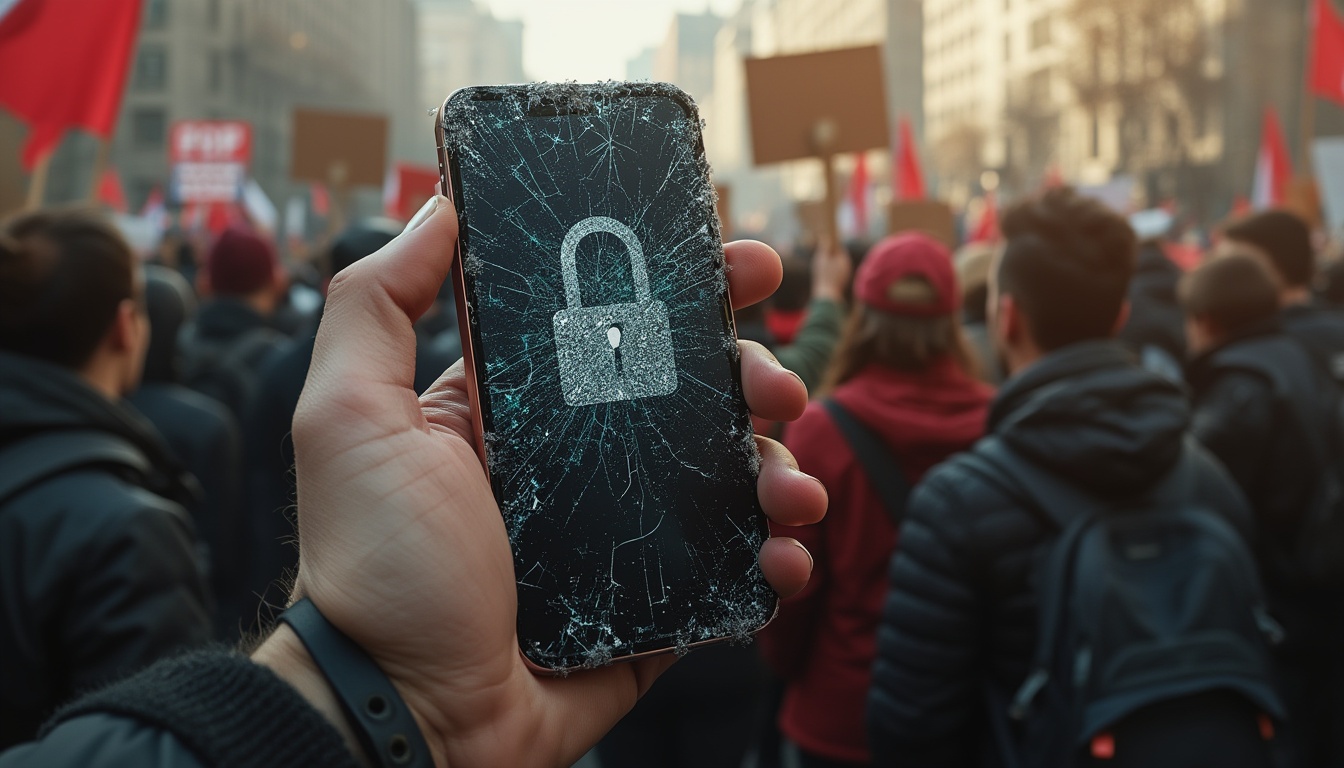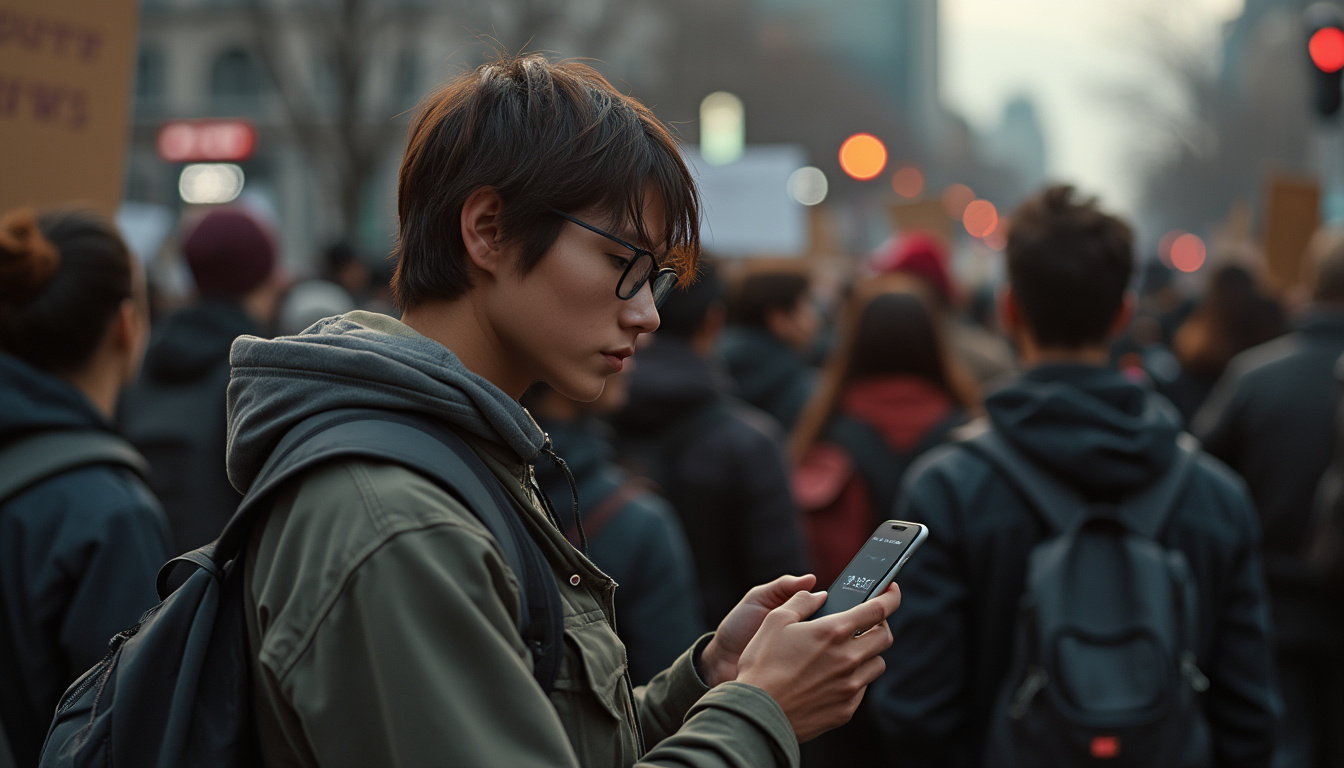
Protecting your digital privacy is crucial when attending a protest. Here’s a comprehensive guide to help you secure your phone and data. Before heading out, take these steps to enhance your phone’s security. Turn off fingerprint and face unlock features. Use a strong alphanumeric passcode instead, as it offers better legal protection against forced unlocking. Ensure your phone’s storage is encrypted. Most devices have this enabled by default, but double-checking in your security settings is a good idea. Install the latest OS and app updates to benefit from recent security patches and protect against vulnerabilities. Switch to end-to-end encrypted apps like Signal for private communication, offering more security than standard messaging platforms. Backup your phone’s data to prevent loss in case your device is lost, damaged, or confiscated. Follow these guidelines to maintain digital security while at the protest. Enable airplane mode to prevent your phone from connecting to cell towers or Wi-Fi, making location tracking harder. Note that emergency calls may still be possible. Remove sensitive apps or files you don’t need, reducing potential risks if your phone is confiscated. Set your phone to lock quickly and require a passcode upon unlocking, adding an extra layer of security. When documenting, avoid capturing identifying features of others. Consider the implications of sharing footage online. Post-protest steps to maintain privacy and security. Update passwords for accounts accessed during the protest, especially if your phone was out of your possession. Consider blurring faces or removing identifying information before sharing media online to protect others’ identities. Use a security app to scan for malware, ensuring your device wasn’t compromised during the protest. Enhance your security with these extra measures. Use a separate phone for the protest to protect your primary device and personal data. Familiarize yourself with local laws regarding phone searches and consider carrying information from civil rights groups. Download apps like the ACLU’s Mobile Justice app to record and report incidents responsibly. By following these steps, you can significantly enhance your digital security and protect both your privacy and that of fellow protesters. Stay proactive and informed for a safer experience. Protecting your digital privacy is crucial when attending a protest. Here’s a comprehensive guide to help you secure your phone and data. Before heading out, take these steps to enhance your phone’s security. Turn off fingerprint and face unlock features. Use a strong alphanumeric passcode instead, as it offers better legal protection against forced unlocking. Ensure your phone’s storage is encrypted. Most devices have this enabled by default, but double-checking in your security settings is a good idea. Install the latest OS and app updates to benefit from recent security patches and protect against vulnerabilities. Switch to end-to-end encrypted apps like Signal for private communication, offering more security than standard messaging platforms. Backup your phone’s data to prevent loss in case your device is lost, damaged, or confiscated. Follow these guidelines to maintain digital security while at the protest. Enable airplane mode to prevent your phone from connecting to cell towers or Wi-Fi, making location tracking harder. Note that emergency calls may still be possible. Remove sensitive apps or files you don’t need, reducing potential risks if your phone is confiscated. Set your phone to lock quickly and require a passcode upon unlocking, adding an extra layer of security. When documenting, avoid capturing identifying features of others. Consider the implications of sharing footage online. Post-protest steps to maintain privacy and security. Update passwords for accounts accessed during the protest, especially if your phone was out of your possession. Consider blurring faces or removing identifying information before sharing media online to protect others’ identities. Use a security app to scan for malware, ensuring your device wasn’t compromised during the protest. Enhance your security with these extra measures. Use a separate phone for the protest to protect your primary device and personal data. Familiarize yourself with local laws regarding phone searches and consider carrying information from civil rights groups. Download apps like the ACLU’s Mobile Justice app to record and report incidents responsibly. By following these steps, you can significantly enhance your digital security and protect both your privacy and that of fellow protesters. Stay proactive and informed for a safer experience. Securing your phone before attending a protest is a critical step in protecting your digital privacy and ensuring your safety. By disabling biometric unlocking, enabling encryption, and using secure messaging apps, you can significantly reduce the risk of unauthorized access to your data. Remember to stay vigilant during the protest by using airplane mode, minimizing sensitive data, and being cautious when filming. After the protest, change your passwords, review your media, and check for spyware to maintain your privacy. Taking these proactive steps will help safeguard both your personal information and that of others involved. Securing your phone is crucial to protect your personal data and maintain privacy. It helps prevent unauthorized access and ensures your information isn’t compromised if your device is lost, damaged, or confiscated. Use end-to-end encrypted apps like Signal for secure communication. These apps offer better privacy and protection compared to standard messaging platforms. Yes, consider using a burner phone to protect your primary device and personal data. This reduces the risk of exposing sensitive information related to your main accounts. If your phone is confiscated, having a strong passcode and encryption will help protect your data. Ensure you have backups and consider using a burner phone for added security. Yes, familiarize yourself with local laws regarding phone searches. Carry information from civil rights groups and know your rights to avoid unnecessary complications.
How to Secure Your Phone Before Attending a Protest
Preparing Your Phone for a Protest
Disable Biometric Unlocking
Enable Encryption
Update Your Software
Use a Secure Messaging App
Back Up Your Data
During the Protest
Use Airplane Mode
Minimize Data on Your Device
Use a Passcode Lock
Be Cautious When Filming
After the Protest
Change Your Passwords
Review Your Photos and Videos
Check for Spyware
Additional Considerations
Consider Using a Burner Phone
Know Your Rights
Familiarize Yourself with Protest Tools

How to Secure Your Phone Before Attending a Protest
Preparing Your Phone for a Protest
Disable Biometric Unlocking
Enable Encryption
Update Your Software
Use a Secure Messaging App
Back Up Your Data
During the Protest
Use Airplane Mode
Minimize Data on Your Device
Use a Passcode Lock
Be Cautious When Filming
After the Protest
Change Your Passwords
Review Your Photos and Videos
Check for Spyware
Additional Considerations
Consider Using a Burner Phone
Know Your Rights
Familiarize Yourself with Protest Tools

Conclusion
FAQ
Why is it important to secure my phone before attending a protest?
What is the best messaging app to use during a protest?
Should I use a burner phone for a protest?
What if my phone is confiscated during a protest?
Do I need to know anything specific about my legal rights regarding phone searches?

 Ultimate Guide to Securing Your Phone Before Joining a Protest
Ultimate Guide to Securing Your Phone Before Joining a Protest
0 Comment